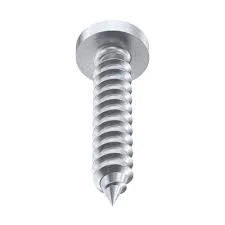Exploring the Importance of Structural Fasteners in Modern Construction and Engineering Projects
Understanding Structural Fasteners The Backbone of Engineering
In the realm of engineering and construction, structural fasteners play a pivotal role, acting as the essential components that hold structures together. These fasteners, which include bolts, nuts, screws, anchors, and washers, are fundamental in ensuring the integrity and safety of various constructions, from bridges and buildings to machinery and aerospace applications.
Types of Structural Fasteners
Structural fasteners come in various shapes and sizes, each designed for specific applications and load-bearing requirements. Among the most common types are
1. Bolts Typically made from steel, bolts are used to join two or more parts together. Bolts can be categorized into different types, including hex bolts, carriage bolts, and anchor bolts, each designed for specific applications. The process of tightening bolts generates clamping force, which holds the materials together securely.
2. Nuts Coupled with bolts, nuts provide a secondary means of securing assembly. They are designed to fit onto the threaded end of a bolt and are available in various styles, such as hex nuts, lock nuts, and wing nuts. The combination of bolts and nuts creates strong and durable connections that can withstand significant loads.
3. Screws Unlike bolts, screws are characterized by their helical threads and can be driven directly into materials without the need for a nut. They are commonly used in wood construction and furniture assembly, and specialized screws such as masonry screws and self-tapping screws adapt to specific materials.
4. Anchors Structural anchors are used to attach objects to concrete or masonry walls. They provide stability and resistance to pull-out forces, making them essential for securing equipment and attachments in various structures. Types of anchors include expansion anchors, adhesive anchors, and sleeve anchors.
5. Washers Although often overlooked, washers are critical in distributing the load of a fastener and preventing damage to the surface of the materials being joined. They can also help in locking mechanisms by preventing nuts from loosening under vibration.
Material Considerations
structural fasteners

The choice of material for structural fasteners is crucial, as it directly affects the performance and longevity of the fastened joint
. Common materials include- Steel Offers high strength and durability, commonly used in construction and heavy machinery. - Stainless Steel Provides excellent corrosion resistance, ideal for applications exposed to moisture and chemicals. - Aluminum Lightweight and corrosion-resistant, suitable for applications where weight is a critical factor. - Plastic Used in environments where electrical insulation or chemical resistance is needed.
Design and Standards
When designing with structural fasteners, engineers must adhere to established standards and guidelines to ensure safety and performance. Organizations like the American Society for Testing and Materials (ASTM) and the International Organization for Standardization (ISO) set specifications for materials and testing methods. These standards help maintain quality and reliability across different applications and industries.
Applications and Importance
The applications of structural fasteners are vast. In the construction industry, they are essential for building frames, bridges, and high-rise structures, providing the necessary strength to withstand environmental forces like wind and seismic activity. In manufacturing, fasteners play a critical role in assembling machinery and equipment, ensuring functional integrity and safety.
Moreover, the importance of structural fasteners extends to the aerospace industry, where they must meet stringent safety and performance standards. Here, fasteners are weighed for strength, fatigue resistance, and corrosion prevention, as failures can lead to catastrophic consequences.
Conclusion
In conclusion, structural fasteners are the unsung heroes of engineering and construction. Their diverse types, material considerations, and adherence to design standards are crucial in creating safe and durable structures. Understanding the role of these fasteners not only highlights their importance in maintaining structural integrity but also emphasizes the complexities involved in engineering design and construction. As technology advances, the development of new fasteners and materials will likely continue to enhance the safety and performance of engineered structures, solidifying their place in the backbone of modern engineering.
-
Weatherproof Plastic Expansion Anchors for OutdoorNewsJun.06,2025
-
Sustainability in the Supply Chain: Eco-Friendly TEK Screws ProductionNewsJun.06,2025
-
Load-Bearing Capacity of External Insulation FixingsNewsJun.06,2025
-
Double Head Bolts: Enhancing Efficiency in Industrial MachineryNewsJun.06,2025
-
Corrosion Resistance in Chipboard Screws: Coatings for Wholesale DurabilityNewsJun.06,2025
-
Butterfly Toggle Bolts : Enhancing Structural ResilienceNewsJun.06,2025
